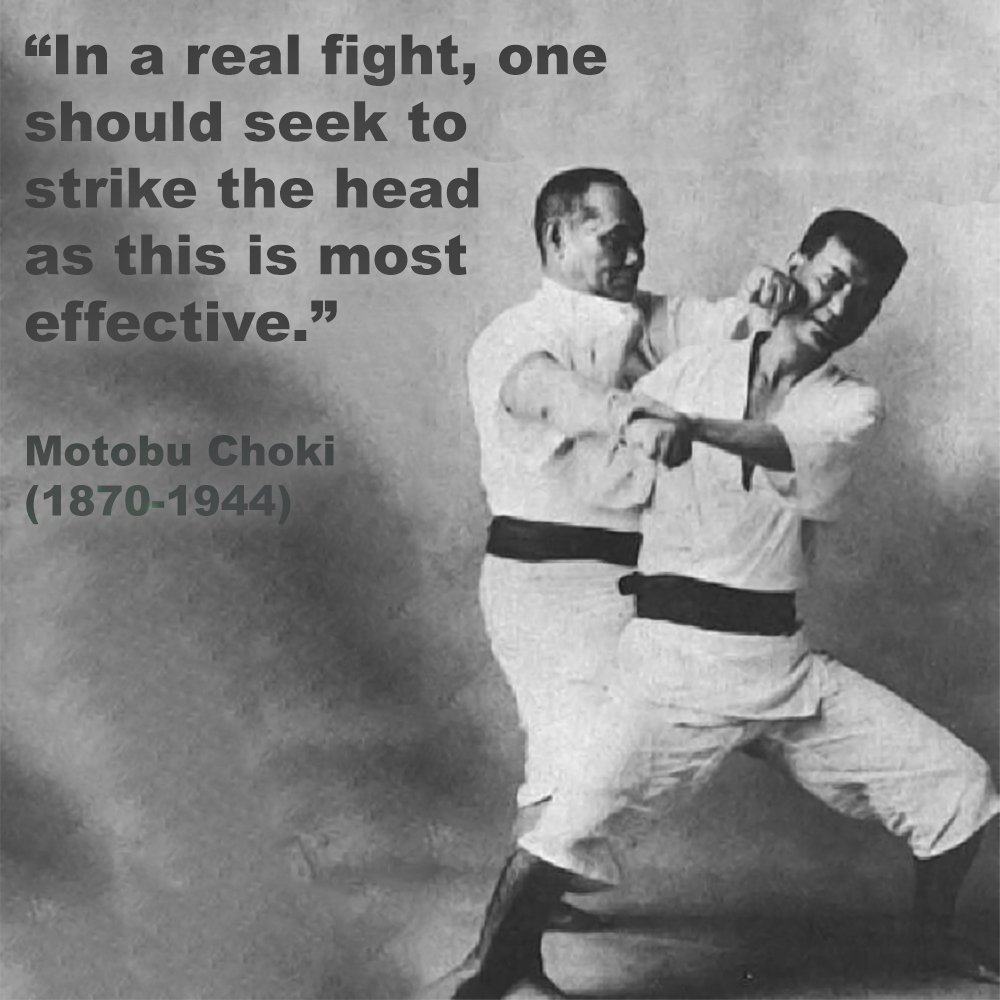
“In a real fight, one should seek to strike the head as this is the most effective.” - Motobu Choki (1870 - 1944)
Posted by ADAM CARTER on MAR 23, 2023

“In a real fight, one should seek to strike the head as this is the most effective.” - Motobu Choki (1870 - 1944)
If your martial arts are studied in a similar way to its original form, a self-defense system, then targeting the most vulnerable body area when a physical confrontation is unavoidable, should be highly considered.
Perhaps a fit, young, athletic tournament or dojo fighter could survive a real life continuous, sport like encounter, but in my experience, excellent basics and delivery of power helps, but striking the right target at the right time is crucial.
When analyzing kata, punches are often preceded by a movement that controls the opponent and sets them up for a punch or strike.
I believe the punches in kata are intended to target the head in almost all cases; including when you punch ‘chudan’.
Often the movement before a chudan punch can result in the opponent's head dropping lower, hence you target the head. This may also put them in an anatomically weaker position, making your punch more damaging.
By targeting the head, a practitioner can inflict a significant amount of damage to an attacker. It’s an effective way to end a fight quickly, potentially knocking them unconscious, or causing disorientation in a way that other targets do not. This can allow the practitioner to escape the situation (the primary objective) or gain the upper hand in a physical confrontation.
Obviously today we would have to take into account the legal considerations as to the strike being proportional to the situation.
When analyzing kata, the use of ‘hikite’, combined with a foot and heel down position, suggests that some form of grip or restraining movement is established while you punch or strike. Therefore, you are actively controlling your opponent, which I think is a lot safer than strategies like throwing punch combinations from a guard, possibly giving any opponent another opportunity to attack.
“In a real fight, one should seek to strike the head as this is most effective.” – Motobu Choki
Another reason why I believe we target the head, is that it allows us to take advantage of an opponent's natural reflexes.
When an attacker sees a strike coming towards their head, their instinct (flinch response) is to protect their head by covering their face and moving away from the stimuli. This leaves other parts of their body, such as the torso or legs, exposed and vulnerable to attack. By exploiting these reflexes, a practitioner can create openings in an attacker's defense.
When suggesting that the head is your target, this would include the other vulnerable areas such as the eyes, nose, ears, and throat. All of which can cause pain, disorientation and can temporarily incapacitate an attacker, giving you an opportunity to escape.
It's important to note that your goal in self-defense situation should always be to escape, to remove yourself from the encounter, fighting only as a last resort, certainly not standing there toe-to-toe exchanging punches. If you do find yourself in a situation where you need to defend yourself physically, striking the right target at the right time is crucial.
When analyzing kata, give consideration to grabbing, pulling, pushing, restraining, of an opponent with your ‘hikite’ hand, effectively using both hands together, it can reveal many potential movements that may not otherwise have been considered.
